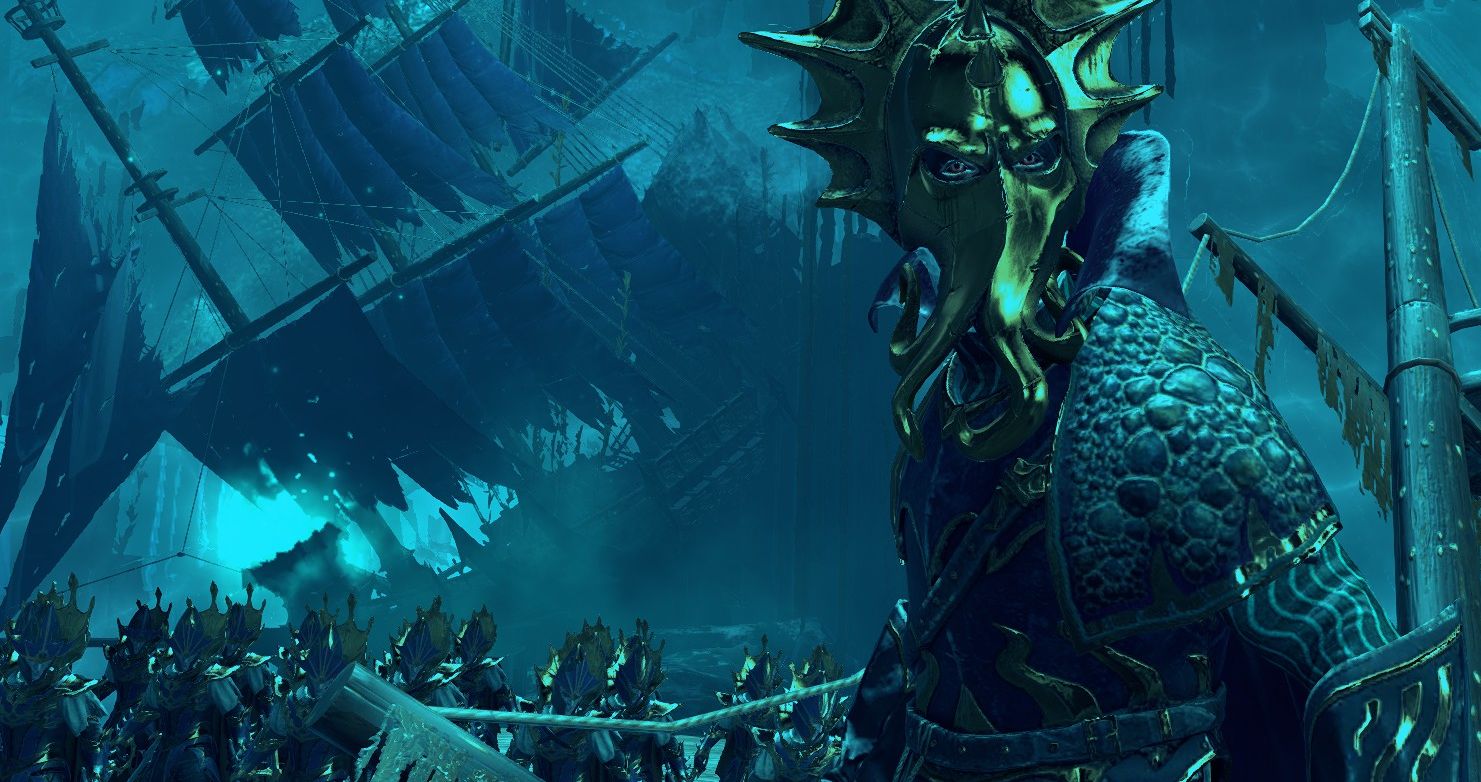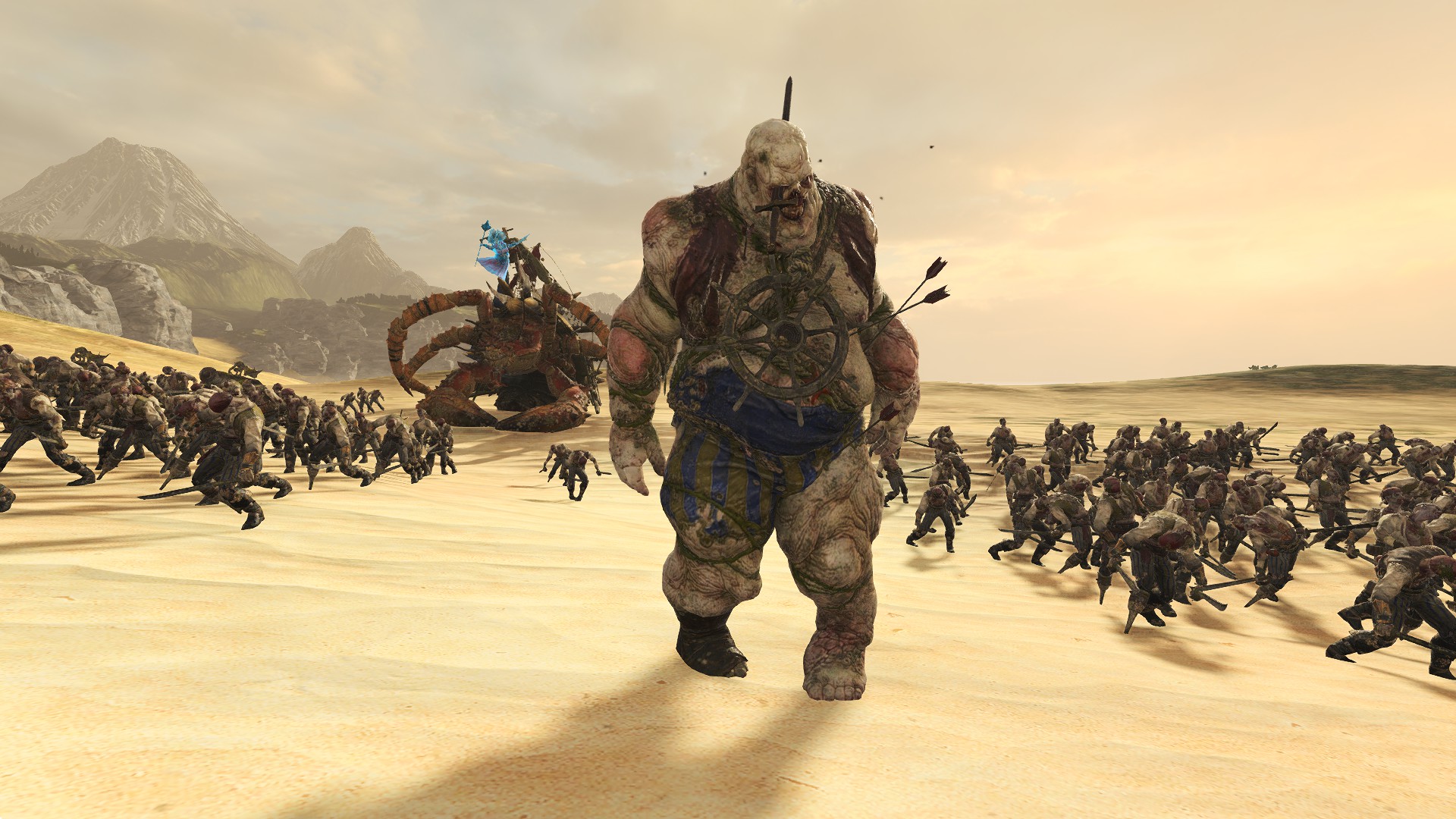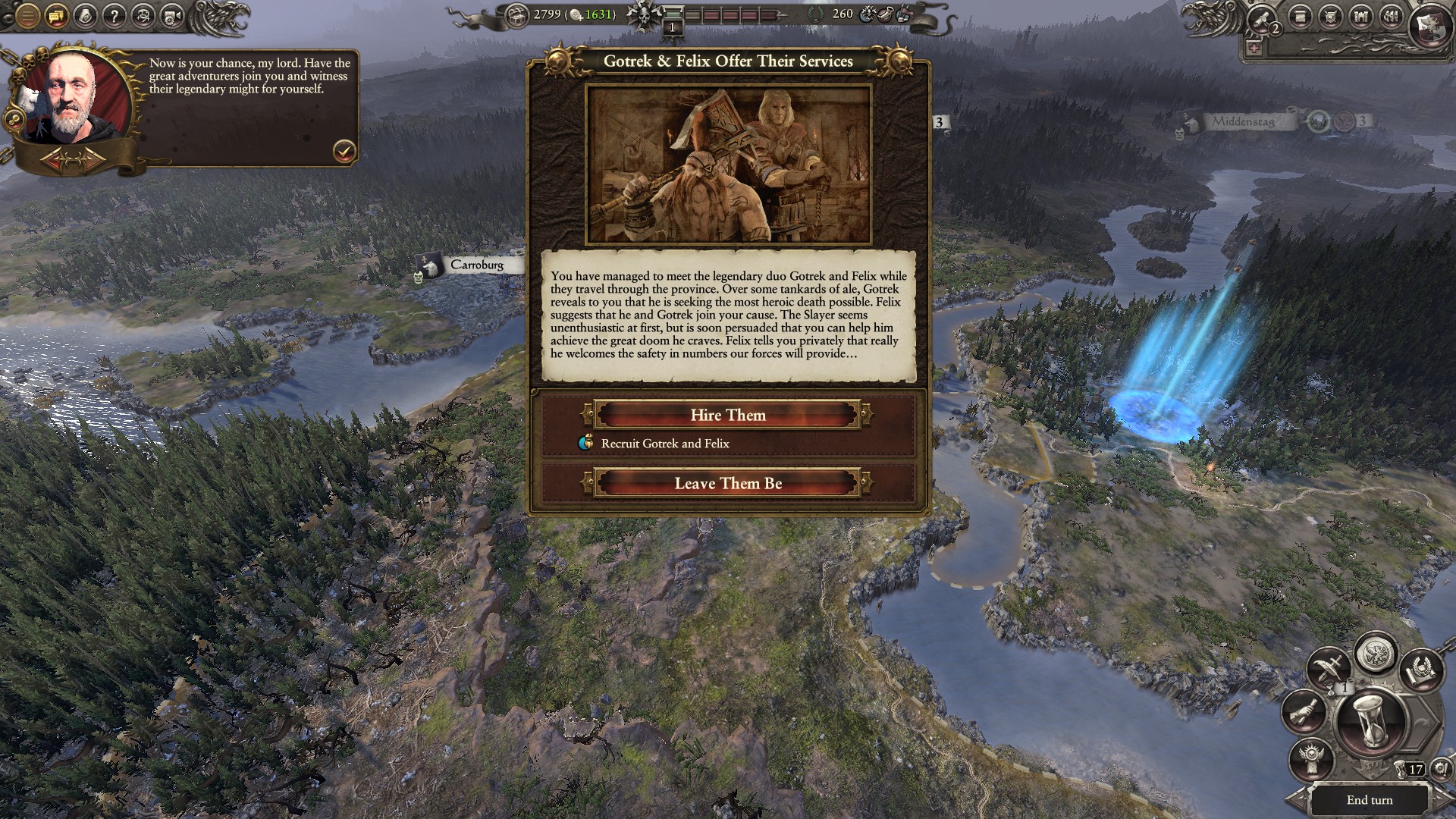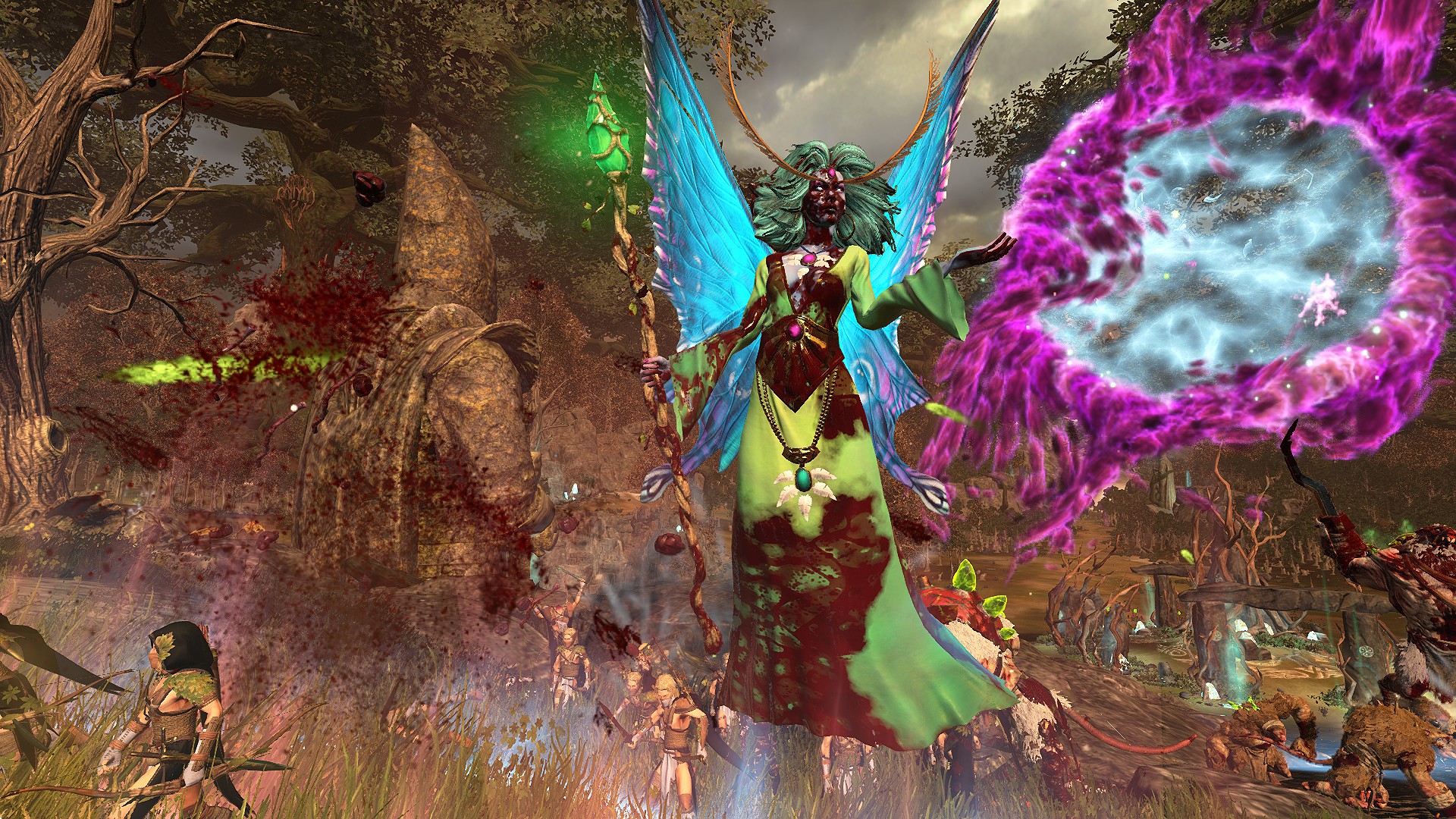Where to start with Total War: Warhammer
Creative Assembly has announced Total War: Warhammer 3 will release later this year, which means now is an ideal time to find a spare hundred hours or so and get into the series (especially if you grab it in the Steam Lunar New Year sale at 66 percent off). If you haven't been playing Total War: Warhammer since 2016, though, it might seem like you've got an intimidating amount of homework to do. There are two games, 15 paid DLC packs, and three different major campaigns to choose from. Where should you start?
Totally new?
If you're an absolute beginner
It might seem sensible to just grab the first game and get on with it. I'm going to tell you not to do that, for a couple of reasons.
One way Total War: Warhammer 2 improved on its predecessor is by continuing to introduce concepts as you play and guiding you with optional missions. By comparison, the first game dumps a bunch of help on you during the early game then abandons you right when you're probably wondering why your public order has tanked and your economy's falling apart. Warhammer 2 is a smoother newbie experience—it might occasionally expect you to care about a character you've never heard of out of the blue, but just roll with it and wiki Lokhir Fellheart later.

The other reason to start with the sequel is that its campaign is more likely to keep you involved. The original comes with the Old World campaign, which has you reconstruct your chosen nation then defend it from the forces of Chaos as they roll down from the north like a snowball of hate. It's a basic "take this territory then hold it" story.
Warhammer 2's Eye of the Vortex campaign is instead a race to control a magical energy source that's spinning out of control, letting everyone perform regular rituals that tap into that big blue funnel for potentially game-altering effects. The dark elves can summon ocean fortresses, while the skaven create what are basically magical nukes. It keeps things interesting in the late game.
Though Total War: Warhammer 2 itself is all you need to get going, you should also grab the various free DLCs from Steam and Total War Access because free stuff is good. You'll be able to play as the skaven, high elves, dark elves, or lizardmen—all good choices for beginners, though the lizardmen do have a tricky economy to make up for the fact their units are such beasts.
I mean, they ride dinosaurs. Of course that's more expensive than some horses or whatever.
What to play if you love tabletop Warhammer
If you're coming from the tabletop game
If you've ever collected and painted an army of Citadel miniatures, seeing them represented in digital form is a delight. (You can press K to get rid of the UI and zoom in for close-ups, and with the Better Camera mod you can get right in there to check out all the detail on a goblin's face.)
In this case, the answer to where to start is "with whatever has your favorite army in it."
The first game comes with the Empire, dwarfs, greenskins, and vampire counts as standard, plus Bretonnia as a free download,. Chaos Warriors, beastmen, wood elves, and Norsca are all paid DLC.
The second game has skaven, lizardmen, high elves, and dark elves as stock armies. Tomb kings and the vampire coast—a new faction of vampirates and seafaring undead cooked up for the videogame—are paid DLC.

To confuse things, some subsets of the first game's factions are playable in the second game's Eye of the Vortex campaign with the right DLC. The Empire (led by Huntsmarshal Wulfhart) return in The Hunter and the Beast, goblins (led by Grom the Paunch) are in The Warden and the Paunch, and wood elves (led by the Sisters of Twilight) in The Twisted and the Twilight. A Bretonnian force under the command of Joan of Arc-analogue Repanse de Lyonesse is available as a free DLC.
DLC actually worth buying
The best Total War: Warhammer DLC
One the subject of DLC, after you've exhausted the options presented by one game's basic factions, there's one expansion worth buying: the other game. If you own both you can download the Mortal Empires DLC for Total War: Warhammer 2, plus gain access to any DLC from the first game to use in it (so grab all of what The Creative Assembly calls "free-LC").

Mortal Empires is a third campaign that plays out on a tweaked-for-scale version of both the other campaign maps combined. The objective is simple conquest, first of your own divided people and then various landmarks spread across the map. It's a serious investment of time, a sandbox where you'll spend hundreds of turns pushing armies around. It can be as life-consuming as any live-service game.
While it's inessential, the DLC has improved as the series has gone on. Of the expansions that add entire new races, the second game's Rise of the Tomb Kings and Curse of the Vampire Coast are the most well-regarded. Each has an unusual playstyle, with the Tomb Kings not having to worry about upkeep and the Vampire Coast able to set up pirate coves to profit from rival cities rather than taking them over, while gathering a resource called infamy to draw out legendary pirate captains.
Norsca, a late addition to the first game, are quite different as well. The mammoth-riding Vikings are all about raiding and sacking rather than settling down, razing enemy settlements so you can build unholy monoliths in the ashes. It's worth it if pillaging is more your thing.
The smaller Legendary Lord packs each focus on expanding two existing factions, adding a playable lord and some unique mercenary troops called regiments of renown to beef up both. The recent ones also tweak the campaign mechanics in interesting ways, so again Total War: Warhammer 2's DLC is the stuff to go for. In particular, The Twisted and the Twilight has wood elves led by dragon-riding twins with a subsystem for forging your own magic items, and skaven who grow new units and mutate existing ones in a "flesh laboratory" powered by a currency called "growth juice." So that's nice.

One DLC to skip is Blood for the Blood God. The Total War games have had separate blood packs for a while now, ostensibly as a way of keeping the base game's age rating low, and while it does seem like over-the-top gore belongs in a Warhammer game if it belongs anywhere—and the DLC also adds some extra campaign events, to be fair—the blood splashes are likely to tank your framerate and look kind of silly. Remember how Dragon Age: Origins would coat everyone in fake-looking red paint in every fight? It's a bit like that. At the risk of disappointing the Lord of Rage, this is one DLC not to bother with.
You might also be tempted to look into mods. We can help you out there too, with the best mods for Total War: Warhammer and the best mods for Total War: Warhammer 2.
For even more Warhammer coverage
Now read on
If you're in the mood for more Warhammer in these trying times, we've got plenty. There actually are some Warhammer games without the words Total War in their name worth playing, so here is every Warhammer Fantasy game ranked from worst to best. If you'd like to get into the books via the games, these are the best Warhammer books to start with. If you'd like to jump between Games Workshop universes and have a look at Warhammer 40,000 in its tabletop incarnation check out this guide to 40K starter sets.

Post a Comment